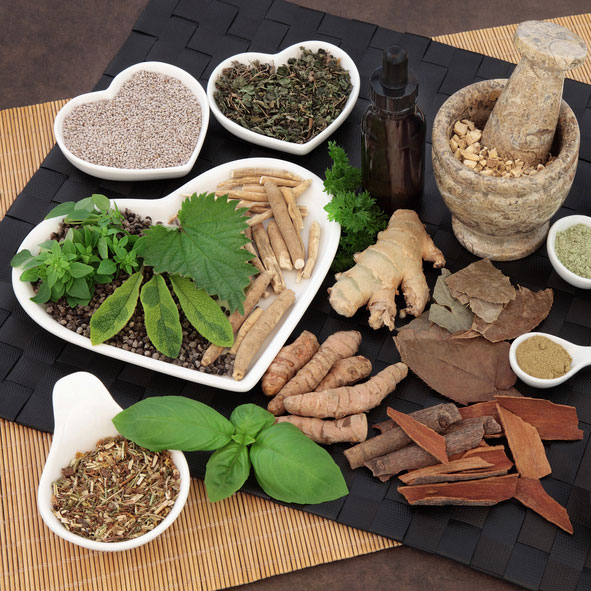What kind of nutrients will optimize your bone’s health? What elements improve joints mobility and reduces inflammation? The bone/joint supplementation depends on the age, hormones, activity, stress, gut health, allergies, toxic load and medication. Someone with a recent bone injury or surgery will need a different level of support for repair and rebuilt of the bone/joints than someone with osteoarthritis or osteoporosis.
Osteoporosis is major risk for broken bones among elderly. Osteopenia is the precursor to osteoporosis that starts with thinning and weakening of the bones which starts as early as in the 30s. The risk of osteoporosis increases with age, certain medical conditions such as kidney disease, removal of ovaries, hyperthyroidism, anorexia, and alcoholism. Among medication that increases the risk of osteoporosis such as proton pump inhibitors (omeprazole), Lithium, anti seizure, chemotherapy, SSRI, and glucorticosteroids. Right nutritional supplementation, diet and exercise help with preventing osteoporosis risks.
The right combination of minerals, micronutrients, collagen and anti-inflammatory are best when taken together to support the matrix of the bone/joints. For example, Genistein (isoflavone) helps build bone density in osteopenia and osteoporosis especially in postmenopausal women because acts as mild SERM(selective estrogen receptor modulator).
To avoid because leach calcium: caffeine, and soft drinks (phosphoric acid)
REFERENCES:
1. Ryder KM, Shorr RI, Bush AJ, Kritchevsky SB, Harris T, Stone K, Cauley J, Tylavsky FA. Magnesium intake from food and supplements is associated with bone mineral density in healthy older white subjects. J Am Geriatr Soc. 2005 Nov;53(11):1875-80.
2. Stendig-Lindberg G, Tepper R, Leichter I. Trabecular bone density in a two year controlled trial of peroral magnesium in osteoporosis. Magnes Res. 1993 Jun;6(2):155-63.
3. Sojka JE, Weaver CM. Magnesium supplementation and osteoporosis. Nutr Rev. 1995 Mar;53(3):71-4.
4. Aydin H, Deyneli O, Yavuz D, Gözü H, Mutlu N, Kaygusuz I, Akalin S. Short-term oral magnesium supplementation suppresses bone turnover in postmenopausal osteoporotic women. Biol Trace Elem Res. 2010 Feb;133(2):136-43.
5. Kanellakis S, et al. Changes in Parameters of bone metabolism in postmenopausal women following a 12-month intervention period using dairy products enriched with calcium, vitamin D, and phylloquinone (vitamin K(1)) or menaquinone-7 (vitamin K (2)): the Postmenopausal Health Study II. Calcif Tissue Int. 2012 Apr;90(4):251-62. doi: 10.1007/s00223-012-9571-z.
6. Kim SM, Kim KM, Kim BT, Joo NS, Kim KN, Lee DJ. Correlation of undercarboxylated osteocalcin (ucOC) concentration and bone density with age in healthy Korean women. J Korean Med Sci. 2010 Aug;25(8):1171-5. Epub 2010 Jul 21.
7. Tsugawa N, Shiraki M, Suhara Y, Kamao M, Tanaka K, Okano T. Vitamin K status of healthy Japanese women: age-related vitamin K requirement for gamma-carboxylation of osteocalcin. Am J Clin Nutr. 2006 Feb;83(2):380-6.
8. van Summeren MJ, Braam LA, Lilien MR, Schurgers LJ, Kuis W, Vermeer C. The effect of menaquinone7 (vitamin K2) supplementation on osteocalcin carboxylation in healthy prepubertal children. Br J Nutr. 2009 ct;102(8):1171-8.
9. Urayama S, et al. Effect of vitamin K2 on osteoblast apoptosis: vitamin K2 inhibits apoptotic cell death of human osteoblasts induced by Fas, proteasome inhibitor, etoposide, and staurosporine. J Lab Clin Med. 2000 Sep;136(3):181-93.
10. Palacios C. The role of nutrients in bone health, from A to Z. Crit Rev Food Sci Nutr 2006;46:621-8.
11. Atik OS, Uslu MM, Eksioglu F, Satana T. Etiology of senile osteoporosis: a hypothesis. Clin Orthop Relat Res 2006;443:25-7.
12. Relea P, Revilla M, Ripoll E, Arribas I, Villa LF, Rico H. Zinc, biochemical markers of nutrition, and type I osteoporosis. Age Ageing 1995;24:303-7.
13. Atik OS. Zinc and senile osteoporosis. J Am Geriatr Soc 1983;31:790-1.
14. Ryan AS, Craig LD, Finn SC. Nutrient intakes and dietary patterns of older Americans: a national study. J Gerontol 1992;47:M145-M150.
15. Saltman PD, Strause LG. The role of trace minerals in osteoporosis. J Am Coll Nutr 1993;12:384-9.
16. Marini H, et al. Effects of the phytoestrogen genistein on bone metabolism in osteopenic postmenopausal women: a randomized trial. Ann Intern Med. 2007 Jun 19;146(12):839-47.
17. Crisafulli A, et al. Effects of genistein on hot flushes in early postmenopausal women: a randomized, double-blind EPT- and placebo-controlled study. Menopause. 2004 Jul-Aug;11(4):400-4.

